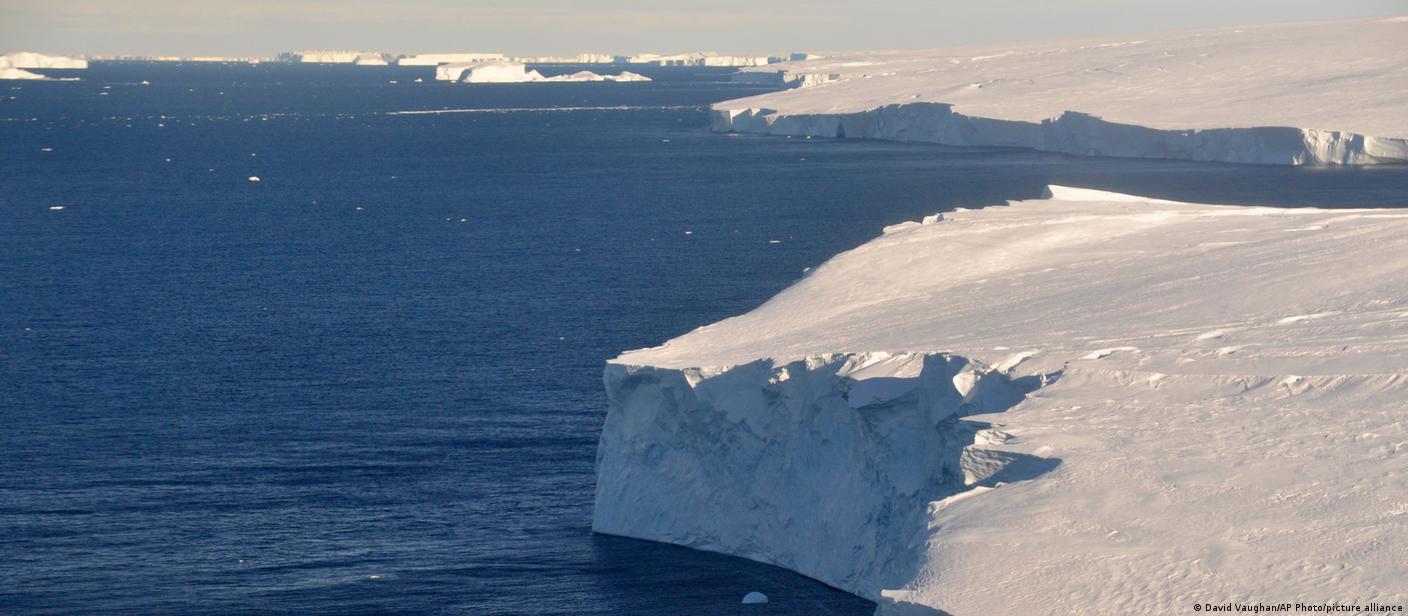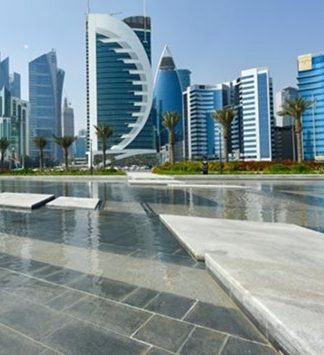CLIMATEGLOBAL ISSUES
Antarctic: Warm water eroding Thwaites glacier, study shows
6 hours ago6 hours ago
The “Doomsday Glacier” could cause global sea levels to rise by more than half a meter if it melts. But scientists examining erosion say there is good news and bad news.
https://p.dw.com/p/4NXiS
Warm water is seeping into the weak points of Antarctica’s giant Thwaites Glacier, exacerbating melting caused by rising temperatures, two papers published in Nature journal showed on Wednesday.
Nicknamed the Doomsday Glacier, Thwaites Glacier could cause global sea levels to rise by more than half a meter (1.6 feet) if it melts, though that’s expected to take hundreds of years. It could also destabilize neighboring glaciers that have the potential to cause a further three-meter rise.
What research into Thwaites Glacier shows
A team of 13 US and British scientists spent about six weeks on the glacier in late 2019 and early 2020. Using an underwater robot vehicle known as Icefin, mooring data and sensors, they monitored the glacier’s grounding line, where ice slides off the glacier and meets the ocean for the first time.
The work comes out of a massive $50 million (€47 million) multi-year international research effort to better understand the widest glacier in the world.
Icefin robotIcefin robot
The pencil-shaped Icefin robot helped scientists see what’s happening below the grounding line, where the ice first juts over the seaImage: Becka Bower/Cornell University/Handout via REUTERS
Before, scientists had no observations from this critical but hard-to-reach point on Thwaites. But with Icefin lowered down a slender 587-meter hole, they saw how important crevasses are in the fracturing of the ice, which takes the heaviest toll on the glacier, even more than melting.
In one of the papers, led by Cornell University-based scientist Britney Schmidt, researchers found that warmer water was making its way into crevasses and other openings known as terraces, causing sideways melt of 30 meters or more per year.
“Warm water is getting into the weakest parts of the glacier and making it worse,” Schmidt explained. “That is the kind of thing we should all be very concerned about,” she said about the findings which underscored how climate change is reaching isolated Antarctica.
The Thwaites glacier: when a giant melts
03:48
Good and bad news
The results of the other paper Schmidt was also working on showed about five meters of melt per year near the glacier’s grounding line. It is less than the most aggressive thinning models had previously predicted.
But she said the melting was still of grave concern. “If we observe less melting… that doesn’t change the fact that it’s retreating,” Schmidt said.
According to Peter Davis, an oceanographer at British Antarctic Survey who is a lead author of one of the studies, the melting isn’t nearly the problem at Thwaites that glacier retreat is.
The more the glacier breaks up or retreats, the more ice floats in water, he said. When ice is on ground as part of the glacier it isn’t part of sea rise, but when it breaks off land and then goes onto water it adds to the overall water level by displacement, just as ice added to a glass of water raises water level.
dh/rt (AP, Reuters)






























